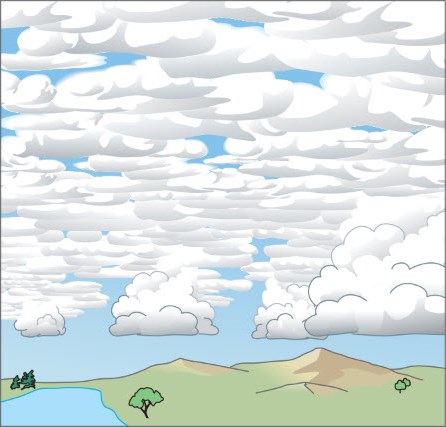CL = 4
(Section 2.8.2.1.4)(a) TECHNICAL SPECIFICATION
Stratocumulus cumulogenitus; Cumulus may also be present.
(b) EXPLANATION
(i) Stratocumulus cumulogenitus most often result from the spreading out of Cumulus when the vertical development (extent) reaches a stable layer.
(ii) When this layer is very stable, convection ceases and the whole cloud mass spreads out.
(iii) On some occasions, the stable layer is either not strong or deep enough to completely stop convection. Cumulus, after temporarily spreading out, then resume their growth above the stable layer, at least in some places. Thus, Stratocumulus cumulogenitus may occur at any level between the base and top of Cumulus clouds.
(iv) The transformation of Cumulus clouds into Stratocumulus cumulogenitus is a continuous process, generally marked by gradual widening of the Cumulus clouds towards the stable layer where they spread out.
(v) Stratocumulus cumulogenitus may form by the spreading out of the upper part of Cumulus clouds as a result of strong wind shear.
(vi) Stratocumulus cumulogenitus often occur in the late afternoon and evening when convection ceases and the domed summits of Cumulus clouds flatten, assuming the appearance of patches of Stratocumulus.
(vii) Stratocumulus cumulonimbogenitus and Stratocumulus cumulogenitus are coded as CL = 3, or CL = 9 while Cumulonimbus is observed.
(viii) If the Cumulonimbus has disappeared, the presence of Stratocumulus cumulonimbogenitus requires the coding CL = 4.
(ix) When pre-existing Stratocumulus is penetrated (entered or entered and passed through) by Cumulus, the latter does not widen upwards towards the Stratocumulus and a thinned or even a cleared zone may surround the Cumulus tower. The coding is CL = 8.





